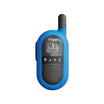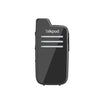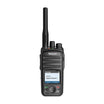Two-way radios are indispensable tools in various industries, providing reliable communication for teams across different sectors. With a wide array of options available in the market, understanding the different types of two-way radios is crucial for making informed decisions about communication solutions. In this guide, we'll delve into three major types of two-way radios, offering insights into their features, benefits, and applications.
Understanding the Three Types of Two-Way Radios
Effective communication is the cornerstone of operational efficiency and safety in many industries. Whether you're managing security operations, coordinating medical responses, or facilitating emergency services, choosing the right type of two-way radio is essential for seamless communication among team members.
- Push-to-Talk Over Cellular (PoC) Radios
PoC radios, also known as Push-to-Talk Over Cellular radios, revolutionize traditional communication by leveraging existing mobile network infrastructure. These radios eliminate distance restrictions typically associated with conventional walkie-talkies and offer enhanced features such as GPS location services. PoC radios are widely used across industries such as industrial, medical, military, law enforcement, and emergency services due to their versatility and efficiency.
With the ability to operate over 4G LTE networks, PoC radios provide unparalleled convenience for users who require reliable communication in various scenarios. Talkpod, a leading provider of wireless communication solutions, offers ergonomic PoC radios with large battery capacity for optimal user experience.
- Analog Radios
Analog radios have been the standard choice for communication for several decades, offering a simple and cost-effective solution for many businesses. These radios function by transmitting audio signals via radio waves, known as carriers. While analog radios are widely used and relatively inexpensive, they may have limitations such as distance restrictions and lower voice clarity compared to digital alternatives.
Businesses utilizing analog radios should be aware of these limitations and consider the potential for future communication needs as innovation in analog technology may plateau over time.
- Digital Radios
Digital radios utilize advanced digital technology to transmit and receive information across the radio spectrum. These radios offer clear and reliable communication while providing resistance to interference. Digital radios address many of the shortcomings of analog radios, including sound quality, information transmission, and reception.
However, digital radios may experience signal degradation in areas with significant distance from transmitter stations compared to PoC radios. Despite this limitation, digital radios remain a popular choice for industries requiring high-quality communication solutions.
Conclusion
Choosing the right type of two-way radio is essential for optimizing communication and ensuring operational efficiency in various industries. Whether you opt for the versatility of PoC radios, the simplicity of analog radios, or the advanced features of digital radios, understanding the unique characteristics of each type is key to selecting the most suitable communication solution for your organization's needs.












































